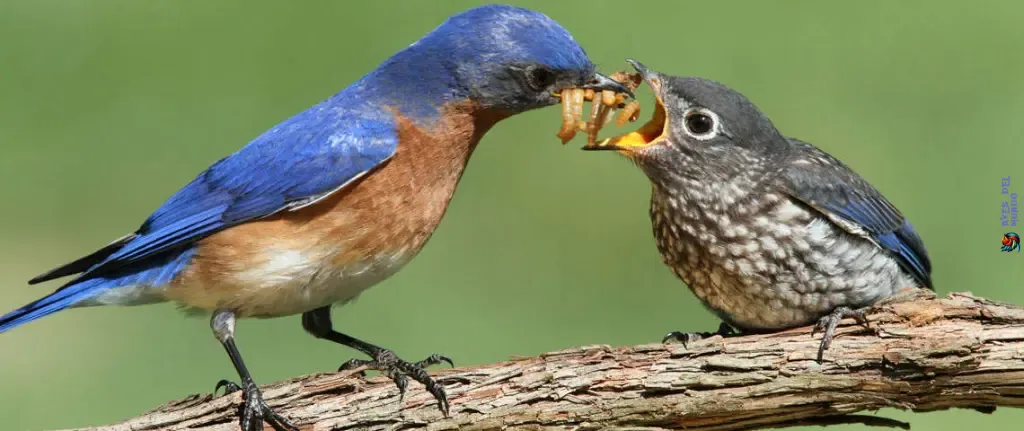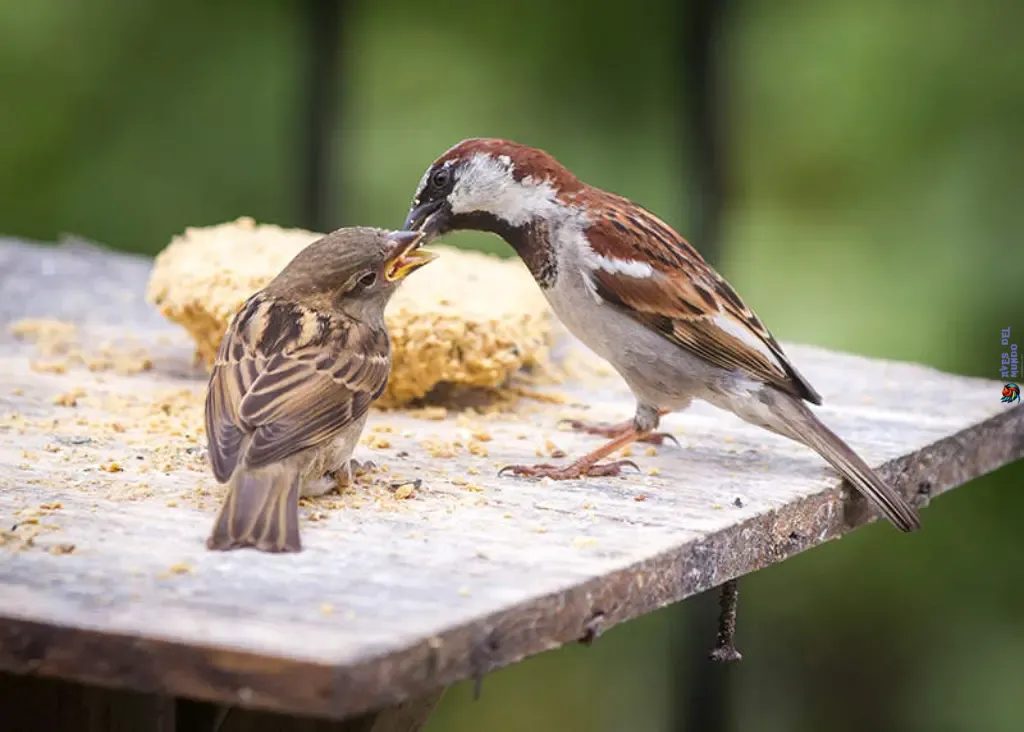Baby birds, known as nestlings and fledglings, rely on a specific diet provided by their parents to grow and develop.
Understanding what baby birds eat is crucial for bird enthusiasts, wildlife rehabilitators, and anyone who finds an orphaned or injured bird. In this comprehensive guide, we will explore the dietary needs of baby birds, the feeding habits of different bird species, and how to care for orphaned baby birds.
Understanding Baby Birds

Nestlings vs. Fledglings
Before diving into their diets, it’s important to distinguish between nestlings and fledglings:
- Nestlings: These are very young birds that are still in the nest, typically without fully developed feathers. They are entirely dependent on their parents for food and care.
- Fledglings: These are young birds that have left the nest but are still under the care of their parents. They may be seen hopping around and learning to fly.
What Do Baby Birds Eat?
The diet of baby birds varies depending on the species, but generally, it includes a high-protein and high-energy mix. Here’s a breakdown of the common foods baby birds eat:
Insectivorous Birds
Insectivorous birds feed their young a diet rich in insects and invertebrates. This high-protein diet is essential for their rapid growth and development. Examples include:
- Caterpillars
- Beetles
- Grasshoppers
- Ants
- Spiders
Granivorous Birds
Granivorous birds primarily eat seeds, but they also feed their young insects to ensure they get enough protein. Common foods include:
- Seeds
- Grains
- Insects (as a supplemental protein source)
Frugivorous Birds
Frugivorous birds feed their young a diet consisting mainly of fruits. However, they often include insects to provide the necessary protein. Their diet may include:
- Berries
- Fruits
- Insects
Omnivorous Birds
Omnivorous birds have a varied diet that includes fruits, seeds, insects, and other small animals. They ensure their young receive a balanced diet. Foods include:
- Fruits
- Seeds
- Insects
- Small vertebrates (like lizards and frogs)
Feeding Techniques
Parent birds employ various techniques to feed their young:
Regurgitation
Most baby birds are fed through regurgitation. The parent bird consumes food, partially digests it, and then regurgitates it into the baby’s mouth. This method ensures the food is easier for the baby to digest.
Direct Feeding
In some cases, parent birds bring whole insects or other food items directly to the nest and feed them to the nestlings.
Crop Milk
Certain bird species, such as pigeons and doves, produce a special secretion called crop milk. This nutrient-rich substance is fed to the young to promote healthy growth.
Feeding Frequency
Baby birds need to be fed frequently due to their high metabolic rates. The frequency of feeding varies depending on the age and species of the bird:
- Newly hatched nestlings: Every 10-20 minutes from sunrise to sunset
- Older nestlings: Every 30-60 minutes
- Fledglings: Every 1-2 hours
Seasonal Feeding Habits
The feeding habits of baby birds can also vary with the seasons. Here’s a seasonal guide to understanding their dietary needs:
Seasonal Care Guide
| Month | Insectivorous Diet | Granivorous Diet | Frugivorous Diet | Omnivorous Diet |
|---|---|---|---|---|
| January | Moderate | Low | Low | Moderate |
| February | Moderate | Low | Low | Moderate |
| March | High | Moderate | Low | High |
| April | High | Moderate | Moderate | High |
| May | Very High | Moderate | High | Very High |
| June | Very High | Moderate | High | Very High |
| July | High | Moderate | High | High |
| August | High | Moderate | High | High |
| September | Moderate | High | High | Moderate |
| October | Moderate | High | Moderate | Moderate |
| November | Low | High | Low | Low |
| December | Low | Low | Low | Low |
How to Care for Orphaned Baby Birds
If you find an orphaned or injured baby bird, it’s essential to know how to care for it until you can get it to a wildlife rehabilitator.
Initial Steps
- Observe: Make sure the bird is truly orphaned. Parent birds often leave their young alone while they forage for food.
- Warmth: Keep the bird warm. Use a small box lined with soft cloth and place it in a warm, quiet area.
- Contact a Professional: Reach out to a local wildlife rehabilitator for advice.
Feeding Orphaned Baby Birds
Feeding orphaned baby birds can be challenging and should only be done if professional help is not immediately available. Here are general guidelines:
Formulas
- Commercial Bird Formula: Available at pet stores, specifically designed for baby birds.
- Homemade Formula: A mix of hard-boiled eggs, baby cereal, and vitamins. Consult with a professional for exact recipes.
Feeding Tools
- Syringe: A small, needleless syringe is ideal for feeding.
- Dropper: A small dropper can also be used for feeding.
Feeding Schedule
- Newly hatched nestlings: Every 15-20 minutes
- Older nestlings: Every 30-45 minutes
- Fledglings: Every 1-2 hours
Water
Baby birds get most of their water from their food, so additional water is usually not necessary. However, if needed, you can offer water using a dropper, being careful not to drown the bird.
Common Mistakes and Misconceptions
Caring for baby birds requires knowledge and caution. Here are common mistakes and misconceptions:
Bread and Milk
Many people mistakenly believe that bread and milk are suitable for baby birds. Bread lacks necessary nutrients, and milk can cause digestive issues since birds are lactose intolerant.
Feeding Frequency
Underfeeding can lead to malnutrition, while overfeeding can cause health problems. Stick to a regular feeding schedule and observe the bird’s behavior for signs of hunger or fullness.
Handling
Excessive handling can stress baby birds and lead to health issues. Handle them only when necessary for feeding and cleaning.
Species-Specific Diets
Different bird species have unique dietary needs. Here are examples of diets for common baby birds:
American Robin
- Diet: Mainly insects (earthworms, beetles) and some fruits (berries).
- Feeding Frequency: Every 10-20 minutes.
House Sparrow
- Diet: Insects and seeds.
- Feeding Frequency: Every 15-30 minutes.
Blue Jay
- Diet: Insects, fruits, and seeds.
- Feeding Frequency: Every 30-45 minutes.
Pigeon
- Diet: Crop milk from parents for the first few days, then seeds and grains.
- Feeding Frequency: Every 1-2 hours.
Transition to Adult Diet
As baby birds grow, they transition from a primarily insect-based diet to the typical diet of adult birds. This transition varies by species but generally occurs as follows:
Weaning Period
- Nestlings to Fledglings: Parents gradually introduce solid foods and reduce the frequency of feedings.
- Fledglings to Juveniles: Young birds begin to forage and eat on their own, mimicking the diet of adult birds.
Signs of Readiness
- Increased Activity: The bird becomes more active and starts exploring its environment.
- Self-Feeding: The bird shows interest in picking up food and eating on its own.
Tips for Bird Enthusiasts
If you are a bird enthusiast or a wildlife rehabilitator, here are some tips to ensure the healthy growth of baby birds:
Provide a Balanced Diet
Ensure that the diet is rich in proteins, fats, and carbohydrates. Variety is key to meeting their nutritional needs.
Monitor Growth
Regularly monitor the growth and development of the baby birds. Any signs of malnutrition or health issues should be addressed immediately.
Create a Safe Environment
Provide a safe and comfortable environment for the birds. This includes a warm, quiet space with minimal disturbances.
Hygiene
Maintain proper hygiene by cleaning the feeding tools and the bird’s living area regularly. This helps prevent infections and diseases.

Understanding what baby birds eat and how to care for them is essential for anyone involved in bird care. Whether you are a bird enthusiast, a wildlife rehabilitator, or someone who has found an orphaned baby bird, this comprehensive guide provides you with the knowledge to ensure the healthy growth and development of baby birds.
By following the guidelines and tips provided, you can help baby birds thrive and eventually transition to independent, healthy adult birds. Remember, when in doubt, always seek advice from professionals to ensure the best care for these delicate creatures.
